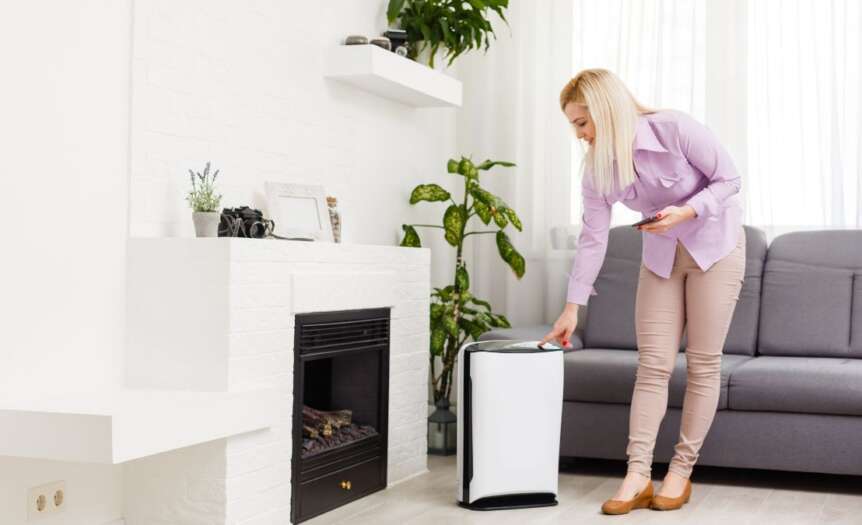Humidity is common in some residential areas, which can be a good or bad thing, depending on your circumstances. But when it comes to your home, high humidity is an enemy you can’t ignore. There are many dangers that arise because of humidity in your home, and you need to know how to deal with them.
Damage to Structures
Humidity can slowly damage your home if it’s in excess. Too much humidity can peel paint or cause water damage to wood, warping it. Furthermore, it can stain your walls and weaken the glue and caulks that hold your home together over time. That’s why you need to do what you can to limit the moisture in the air.
Hidden Growth
Damp and dark places are ideal growing spots for mold and fungus, which is why humidity can be so bad in a home. Mold can develop in places you don’t consider when you go around checking for it because of the extra humidity in the air. For instance, your HVAC system can house mold. As a result, you must take the proper steps to protect your home against HVAC mold growth.
Health Risks
Humidity can affect people directly as well. While you can avoid many of the issues with proper care, you should still know them. Common problems include dehydration, fatigue, heat exhaustion, muscle cramps, and fainting, to name a few.
Increased Costs
Humidity doesn’t directly increase your costs at home outside of the damage to your house, but dealing with it can. You need good air quality systems to control the humidity in your home, which can drive up your energy bills and energy consumption. However, it’s the best way to prevent humidity buildup and its dangers in your own home.
Humidity can be a great boon if you struggle with dry air and can help decrease allergy symptoms in some cases. However, too much of it can be a problem for any homeowner. This is something you’ll want to know before you move into a place with commonly high humidity so that you can properly plan for it.










 Deering Estate
Deering Estate
 Massage Envy South Miami
Massage Envy South Miami
 Calla Blow Dry
Calla Blow Dry
 My Derma Clinic
My Derma Clinic
 Sushi Maki
Sushi Maki
 Sports Grill
Sports Grill
 The Healthy Kitchen
The Healthy Kitchen
 Golden Rule Seafood
Golden Rule Seafood
 Malanga Cuban Café
Malanga Cuban Café

 Kathleen Ballard
Kathleen Ballard
 Panter, Panter & Sampedro
Panter, Panter & Sampedro
 Vintage Liquors
Vintage Liquors
 The Dog from Ipanema
The Dog from Ipanema
 Rubinstein Family Chiropractic
Rubinstein Family Chiropractic
 Your Pet’s Best
Your Pet’s Best
 Indigo Republic
Indigo Republic




 ATR Luxury Homes
ATR Luxury Homes


 2112 Design Studio
2112 Design Studio
 Hamilton Fox & Company
Hamilton Fox & Company
 Creative Design Services
Creative Design Services
 Best Pest Professionals
Best Pest Professionals
 HD Tree Services
HD Tree Services
 Trinity Air Conditioning Company
Trinity Air Conditioning Company
 Cisca Construction & Development
Cisca Construction & Development
 Mosquito Joe
Mosquito Joe
 Cutler Bay Solar Solutions
Cutler Bay Solar Solutions


 Miami Royal Ballet & Dance
Miami Royal Ballet & Dance
 Christopher Columbus
Christopher Columbus
 Pineview Preschools
Pineview Preschools
 Westminster
Westminster
 Carrollton
Carrollton
 Lil’ Jungle
Lil’ Jungle
 Frost Science Museum
Frost Science Museum
 Palmer Trinity School
Palmer Trinity School
 South Florida Music
South Florida Music
 Pinecrest Orthodontics
Pinecrest Orthodontics
 Dr. Bob Pediatric Dentist
Dr. Bob Pediatric Dentist
 d.pediatrics
d.pediatrics
 South Miami Women’s Health
South Miami Women’s Health

 The Spot Barbershop
The Spot Barbershop
 My Derma Clinic
My Derma Clinic




 Miami Dance Project
Miami Dance Project

 Rubinstein Family Chiropractic
Rubinstein Family Chiropractic
 Indigo Republic
Indigo Republic

 Safes Universe
Safes Universe
 Vintage Liquors
Vintage Liquors
 Evenings Delight
Evenings Delight





 Atchana’s Homegrown Thai
Atchana’s Homegrown Thai
 Baptist Health South Florida
Baptist Health South Florida

 Laser Eye Center of Miami
Laser Eye Center of Miami
 Visiting Angels
Visiting Angels
 OpusCare of South Florida
OpusCare of South Florida

 Your Pet’s Best
Your Pet’s Best





 HD Tree Services
HD Tree Services
 Hamilton Fox & Company
Hamilton Fox & Company


 Creative Design Services
Creative Design Services